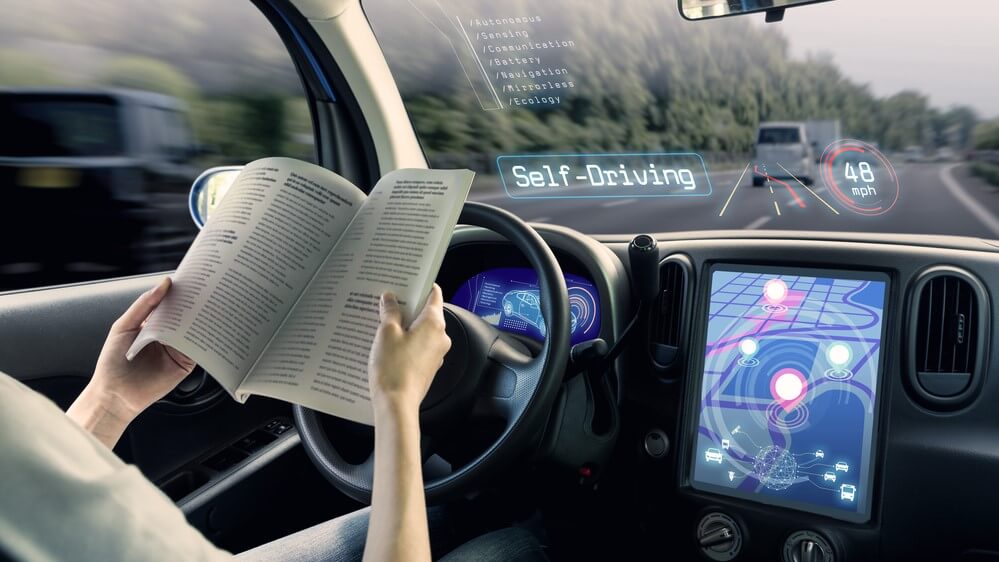Self-Driving Vehicles: Navigating the Road to Autonomy
Introduction
The Revolution on Wheels
In the realm of transportation, a technological revolution is reshaping the landscape of mobility: Self-Driving Vehicles. Also known as autonomous or driverless cars, these vehicles represent a convergence of cutting-edge technologies such as artificial intelligence, sensor systems, and advanced robotics. This exploration delves into the evolution of self-driving vehicles, the underlying technologies driving their development, the challenges they face, and the profound impact they are poised to have on the future of transportation.
I. The Evolution of Self-Driving Technology: From Fiction to Reality
1. Historical Perspective:
- The roots of self-driving technology trace back to the concept of autonomous vehicles in science fiction and early experiments in the 20th century.
- Landmarks in the development of autonomous technology, from early prototypes to contemporary advancements.
2. The Rise of Artificial Intelligence:
- The pivotal role of artificial intelligence (AI) in enabling self-driving capabilities.
- Machine learning algorithms and neural networks that empower vehicles to perceive, analyze, and make decisions in real-time.
3. Sensor Systems and Perception:
- The array of sensors employed in self-driving cars, including cameras, lidar, radar, and ultrasonic sensors.
- The role of sensor fusion in creating a comprehensive and accurate perception of the vehicle’s surroundings.
II. Levels of Autonomy: Deciphering the Autonomy Spectrum
1. SAE Levels of Automation:
- Understanding the levels of autonomy defined by the Society of Automotive Engineers (SAE).
- The transition from Level 1 (Driver Assistance) to Level 5 (Full Automation).
2. Current State of Autonomy:
- An overview of commercially available autonomous features in modern vehicles.
- The limitations and capabilities of semi-autonomous systems like adaptive cruise control and lane-keeping assistance.
3. Challenges in Achieving Full Autonomy:
- The complexities and technical hurdles associated with achieving Level 5 autonomy.
- Regulatory and safety considerations that shape the development of fully autonomous vehicles.
III. The Technological Pillars: How Self-Driving Vehicles Work
1. Perception Systems:
- The role of sensors in collecting data about the vehicle’s environment.
- Image recognition, object detection, and sensor fusion for robust perception.
2. Decision-Making Algorithms:
- The decision-making processes that allow the vehicle to interpret data and respond appropriately.
- Predictive modeling and path planning algorithms for navigating complex scenarios.
3. Control Systems:
- The execution of decisions through control systems and actuators.
- Vehicle dynamics control and real-time adjustments for optimal performance.
IV. Real-World Applications: Beyond the Test Tracks
1. Ride-Hailing and Mobility as a Service (MaaS):
- The integration of self-driving vehicles into ride-hailing platforms.
- The potential for transforming urban mobility through Mobility as a Service.
2. Autonomous Fleets and Logistics:
- The impact of autonomous technology on the logistics and delivery industry.
- Automation in freight transport and last-mile delivery solutions.
3. Public Transportation and Autonomous Shuttles:
- Pilots and implementations of autonomous shuttles in public transportation.
- The potential for enhancing accessibility and efficiency in urban transit.
V. Challenges and Roadblocks: Navigating the Bumps in the Road
1. Safety Concerns:
- High-profile incidents and accidents involving self-driving vehicles.
- The imperative for robust safety measures and testing protocols.
2. Ethical Dilemmas:
- The ethical considerations in autonomous decision-making.
- The Trolley Problem and other ethical scenarios faced by self-driving systems.
3. Legal and Regulatory Frameworks:
- The evolving legal landscape for autonomous vehicles.
- The need for standardized regulations to ensure safety and accountability.
4. Technological Limitations:
- Adverse weather conditions and challenging environments that pose difficulties for self-driving systems.
- The limitations of current sensor technologies in certain scenarios.
VI. The Future of Self-Driving Vehicles: Beyond the Horizon
1. Urban Planning and Infrastructure:
- The potential impact of autonomous vehicles on city planning and infrastructure.
- The need for smart cities to accommodate and optimize self-driving fleets.
2. Connectivity and V2X Communication:
- Vehicle-to-Everything (V2X) communication and its role in enhancing safety and efficiency.
- The integration of self-driving vehicles into a connected transportation ecosystem.
3. Social and Economic Impacts:
- The potential for reducing traffic congestion and improving traffic flow.
- The socioeconomic implications, including job displacement and the emergence of new industries.
4. Environmental Considerations:
- The environmental benefits and challenges associated with autonomous vehicles.
- The role of self-driving technology in advancing electric and shared mobility.
Conclusion: Steering into the Autonomous Future
As we traverse the winding roads of technological innovation, self-driving vehicles emerge not only as a marvel of engineering but as harbingers of a transportation revolution. The evolution from early experiments to the complex ecosystems of perception, decision-making, and control systems signifies a paradigm shift in how we conceive and experience mobility.
While the journey is not without challenges—safety concerns, ethical dilemmas, and the need for robust regulatory frameworks—self-driving technology continues to advance. The integration of autonomous features in everyday vehicles and the deployment of autonomous fleets in various applications mark a pivotal moment in the history of transportation.
The future of self-driving vehicles extends beyond the horizon, promising smarter cities, connected transportation networks, and a redefined urban landscape. As we navigate the twists and turns of technological progress, the destination holds the potential for safer roads, enhanced accessibility, and a transformative impact on how we move from point A to point B.
In the grand narrative of transportation, self-driving vehicles are steering us into an autonomous future—one where the driver’s seat transforms into a space for productivity, leisure, and reflection. As the wheels of innovation keep turning, the roadmap ahead is etched with the promise of a transportation era where machines take the wheel, allowing humanity to sit back, relax, and witness the unfolding chapters of a mobility revolution.









